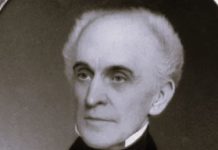Canute (ka-nut’) the Great Knud, or Knut, the second king of Denmark of that name and first Danish king of England: b. in the former country, about 995; d. Shaftesbury, England, 1035. He was the son of Sweyn, king of Denmark, and accompanied his father in his victorious campaigns in England. Sweyn proclaimed himself king of England, died in 1014, before his power was established, and appointed Canute as his successor. Then immediately, a latter was driven out by Ethel Red, the representative of the Saxon line. He fled with 60 ships to his brother Harold’s court.
Harold enabled him to build a large fleet in the north to carry out his campaign in England. He invaded the country again in 1015. He fought many battles with Edmund Ironside, who succeeded his father, Ethel Red, in 1016, and finally won the battle of Assington. After this battle, Edmund and Canute agreed upon a kingdom division. To Canute were assigned Mercia and Northumbria, while the Saxon prince preserved West and East Anglia.
By dying his brother Harold, he obtained Denmark’s crown (1016). In the same year, and only one month after the ratification of the partition treaty, Edmund died. Canute became the sole king of England without further resistance. He refrained from murdering his late rival’s children and sent them to his half-brother, Olave, Sweden’s king. He put away his wife, Alfgive, the daughter of the Earl of Northampton, and espoused Emma, the widow of Ethelred, the Saxon monarch (1017), on the condition that their children succeeded to England’s throne.
He made the greatest efforts to earn the affection of his English subjects, to whom his Danish origin was no recommendation. He disbanded his Danish army, retaining only a bodyguard. He endeavored to blend the two races as far as possible and induce them to live in harmony with each other. He erected churches and donated to abbeys and monasteries at the sites of former conflicts and massacres.
As a witness at Winchester, he compiled a code of laws that is still extant. In this code, he denounced those who kept up pagan rites and superstitions and forbade the sending of Christian slaves out of the country for sale. Although Canute generally resided in England, he visited Denmark. He carried with him on these occasions an English fleet, English missionaries, and English artisans.

from the New Minster Liber Vitae, 1031






